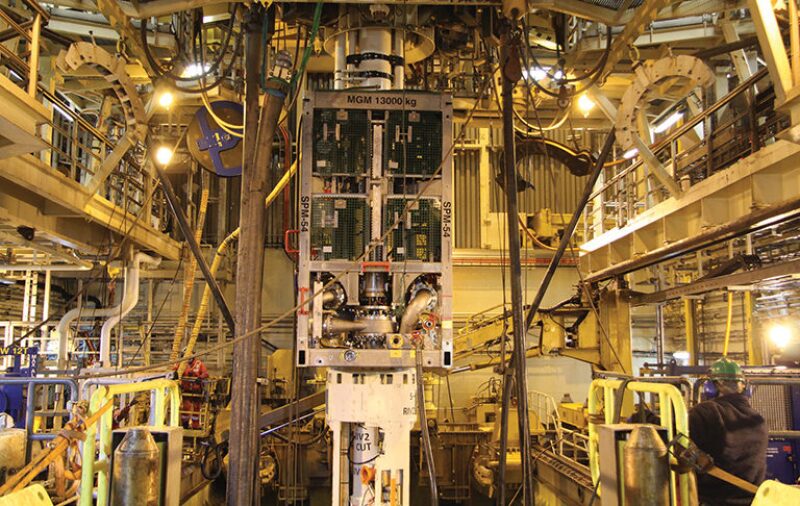The Troll field is one of the largest gas producers discovered off Norway, but ensuring its long-term future required finding ways to drill wells in an increasingly fragile formation to develop its rich oil reserves. Production dating back to 1995 has sharply lowered formation pressure and caused subsidence, making it difficult to drill the wells Statoil needed.
Even with some of the lightest drilling mud, Statoil was unable to blend a drilling fluid light enough to avoid major losses in some parts of the formation, said Dag Ove Molde, project leader of dual gradient on Troll at Statoil, the operator of the field.
Drilling is expected to get even more difficult as future production further reduces reservoir pressure. A Statoil study predicted it would need to curtail drilling by 2018 because it will become increasingly difficult to drill long horizontal wells needed to efficiently produce oil reserves.
With current methods at its limits, Statoil turned to dual-gradient drilling. The approach called EC-Drill placed a pump on a modified joint in a riser where it could pump the drilling fluid out of the riser and into a flexible pipe to the surface. This lowered the pressure in the well by leaving about two-thirds of the riser filled with air much of the time. The bottomhole pressure using EC-Drill was significantly less than what it would have been when drilling with a full riser in water 1,000 ft deep. This allowed drillers at Troll to remain well below fracture level, Molde said, adding, “It enabled us to reach targets that we were not able to reach with conventional technology.”
The technique allowed Statoil to significantly lower the effective mud weight while drilling three laterals. It reported reducing total mud consumption by about 70% compared with conventionally drilled wells. By measuring the volume of fluid flowing through the subsea pump and comparing that total to the volume flowing into the well, it was possible to quickly detect small losses and react to them by varying the pump speed.
Speeding the pump reduced the fluid level, reducing the pressure of the mud returns by lowering the equivalent circulating density—the pressure added by the friction as fluid is pumped through the well. Molde said dual gradient could allow drilling for another 10 to 15 years and eliminate fracturing while drilling.
In May, the EC-Drill equipment was out for servicing, but Molde expected to use it again. “We will drill one well conventionally and, hopefully, then we will go back to dual gradient for future wells,” he said. “The more wells we can drill with this technology, the better.”


